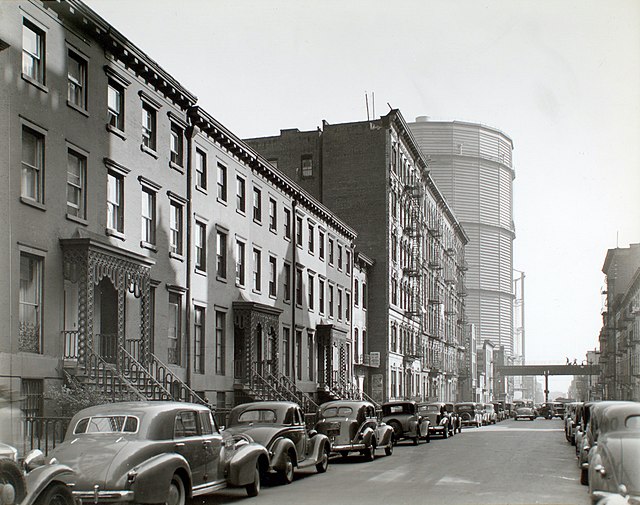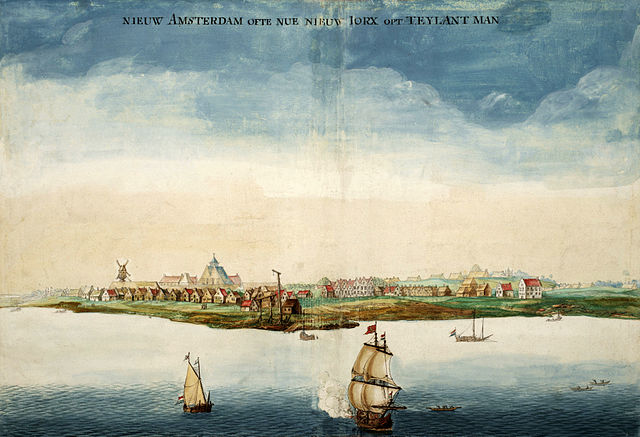Stuyvesant Town–Peter Cooper Village
Stuyvesant Town–Peter Cooper Village, sometimes shortened to StuyTown, is a large post–World War II private residential development on the east side of the New York City borough of Manhattan. The complex consists of 110 red brick apartment buildings on an 80-acre (32 ha) tract stretching from First Avenue to Avenue C, between 14th and 23rd Streets. Stuyvesant Town–Peter Cooper Village is split up into two parts: Stuyvesant Town, south of 20th Street, and Peter Cooper Village, north of 20th Street. Together, the two developments contain 11,250 apartments.
Stuyvesant Town as seen from the south at First Avenue in 2006
East 20th Street looking east in the direction of First Avenue in 1938. This picture shows two of the huge gas holders that gave the area the name Gas House District; the block in the foreground did not become part of the Stuyvesant Town–Peter Cooper Village complex, but the area on the east side of First Avenue, where the tanks are, did. (Photo by Berenice Abbott)
Stuyvesant Town (bottom and left) and Peter Cooper Village (top and right) as seen from the air over the East River looking northwest (2012)
Stuyvesant Town's central green, the Oval
Manhattan is the most densely populated and geographically smallest of the five boroughs of New York City. The borough is coextensive with New York County, the smallest county by geographical area in the U.S. state of New York. Located almost entirely on Manhattan Island near the southern tip of the state, Manhattan constitutes the center of the Northeast megalopolis and the urban core of the New York metropolitan area. Manhattan serves as New York City's economic and administrative center and has been described as the cultural, financial, media, and entertainment capital of the world.
Midtown Manhattan, the world's largest central business district, in the foreground, with Lower Manhattan and its Financial District in the background
New Amsterdam, centered in what eventually became Lower Manhattan, in 1664, the year England took control and renamed it New York
Statue of George Washington in front of Federal Hall on Wall Street, where in 1789 he was sworn in as the first U.S. president.
Manhattan's Little Italy on the Lower East Side, c. 1900








